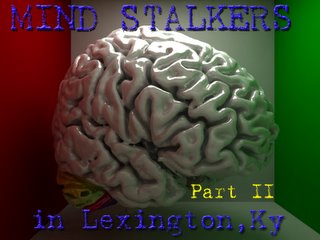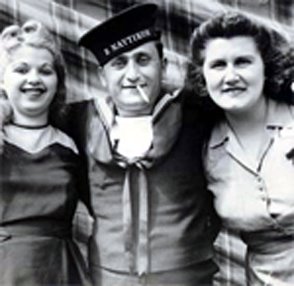"MIND STALKERS" In Lexington Part II

A report dated May 5, 1959, comments on an experiment involving psilocybin (a semi-synthetic version of the magic mushroom). Subjects who ingested the drug became extremely anxious, although sometimes there were periods of intense elation marked by "continuous gales of laughter." A few patients felt that they "had become very large, or had shrunk to the size of children. Their hands or feet did not seem to be their own and sometimes took on the appearance of animal paws...They reported many fantasies or dreamlike states in which they seemed to be elsewhere. Fantastic experiences, such as trips to the moon or living in gorgeous castles, were occasionally reported."Isbell concluded, "Despite these striking subjective experiences, the patients remained oriented in time, place and person. In most instances, the patients did not lose their insight but realized that the effects were due to the drug. Two of the nine patients, however, did lose insight and felt that their experiences were caused by the experimenters controlling their minds."
One subject who could be found, spent only a brief time with Dr. Isbell. Eddie Flowers was 19 years old and had been in Lexington for about a year when he signed up for Isbell's program. He lied about his age to get in, claiming he was 21. All he cared about was getting some drugs. He moved into the experimental wing of the hospital where the food was better and he could listen to music. He loved his heroin but knew nothing about drugs like LSD. One day he took something in a graham cracker. No one ever told him the name, but his description sounds like it made him trip—badly, to be sure. "It was the worst shit I ever had," he says. He hallucinated and suffered for 16 or 17 hours. "I was frightened. I wouldn't take it again." Still, Flowers earned enough "points" in the experiment to qualify for his "payoff in heroin. All he had to do was knock on a little window down the hall. This was the drug bank. The man in charge kept a list of the amount of the hard drug each inmate had in his account. Flowers just had to say how much he wanted to withdraw and note the method of payment. "If you wanted it in the vein, you got it there," recalls Flowers who now works in a Washington, D.C. drug rehabilitation center.
Dr. Isbell was among the group of distinguished American scientists who had enthusiastically embarked on studies under CIA contracts. His principal responsibilities had been research to find a synthetic substitute for codeine (the government feared the U.S. might be cut off from all its usual sources of opium). But Dr. Isbell's report for the first quarter of 1954 noted that clinical studies at his center were also concerned with “intoxication with diethylamide of lysergic acid.”
In his quarterly report to the CIA, he claimed new insights, including an evaluation of whether the drug's effects varied according to race, age, and social and economic status: “We have now studied the subjective changes induced by LSD-25 in more than 50 former narcotic addicts. The symptoms observed appear to be identical with those observed in groups of non-addicts or for different composition with respect to race, age, social and economic status, and personality types.... The effects of LSD-25 appear to be specific and are not related to any of the factors mentioned above. This is a matter of great interest, since the subjective effects induced by LSD-25 have been studied more intensively and more thoroughly in a greater diversity of populations than any other drug with which we are familiar, including morphine and alcohol.”
Dr. Isbell refused all request for interviews. He did tell a Senate subcommittee in 1975 that he inherited the drug payoff system when he came to Lexington and that "it was the custom in those days.... The ethical codes were not so highly developed, and there was a great need to know in order to protect the public in assessing the potential use of narcotics.... I personally think we did a very excellent job."
Dr. Sidney Gottlieb was the director of the CIA's Project MK-ULTRA from 1953 to 1972. EVERYTHING pertaining to his work on "mind control," "truth serums," poisons and their delivery systems, and chemical, biological, and radiological warfare was ordered destroyed in 1972 by his colleague and mentor, CIA Director Richard Helms. Of course, not everything got destroyed. Certainly there was mis-direction that was allowed to slip through the cracks, but a number of investigations over the years have turned up damning evidence as well.


1 Comments:
Hello, my name is Elizabeth and I work with National Geographic Television. I found your blog on mind stalkers and was wondering where you got your source, Eddie Flowers. We are working on a new show that exposes exactly what this blog entry talks about and would like to find Mr. Flowers to do an interview. Please call me at my office number (202) 862-5201 or email me at esandhu@ngs.org. Your help would be very much appreciated!
By Anonymous, at 10:50 AM
Anonymous, at 10:50 AM
Post a Comment
<< Home